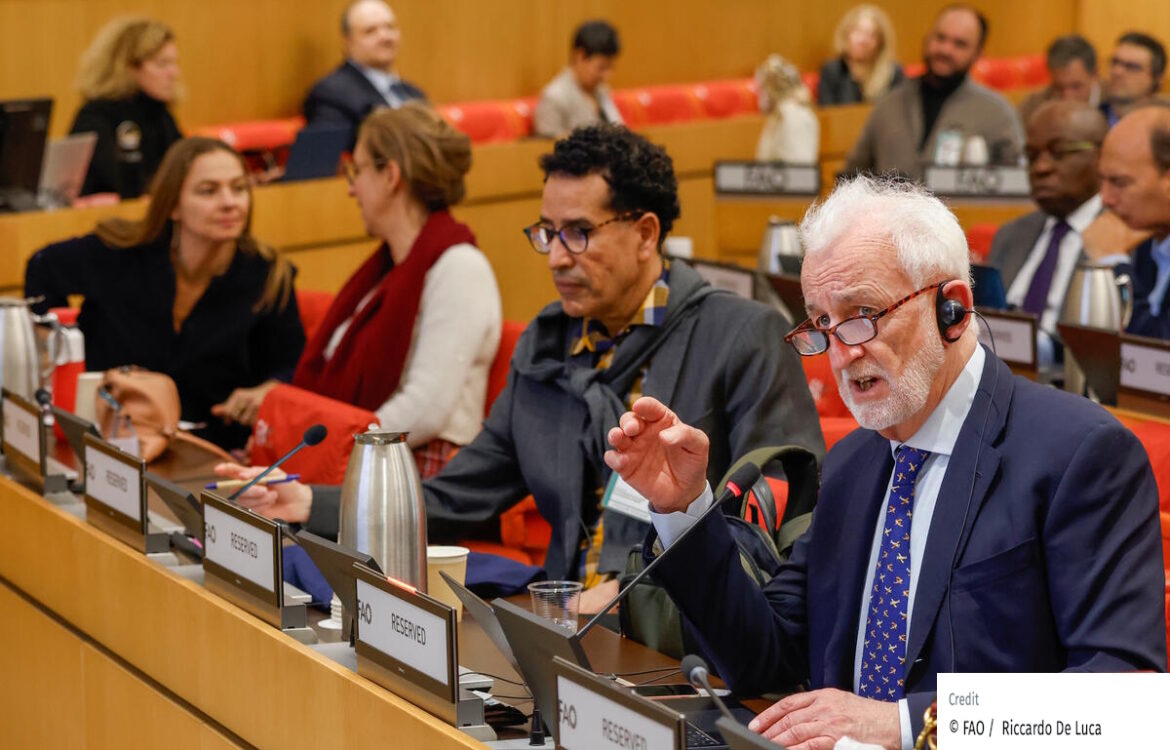
Geographical Indications and Innovation: Shaping Sustainable Food Systems
Author: Mariagiulia Mariani
From February 18 to 21, 2025, the Worldwide Perspectives on Geographical Indications (GIs) conference gathered experts, researchers, and policymakers at FAO Headquarters in Rome. The event provided a platform to explore the evolving role of GIs in sustainable agri-food systems. Key themes included climate change adaptation, refined regulatory frameworks, market dynamics, and international collaboration, especially in Africa, offering a comprehensive outlook on the future of GIs in a rapidly changing global context. Researchers from PAGE and the University of Pisa contributed to the dialogue.
Key research gaps for the future of Geographical Indications
One of the most insightful contributions came from François Casabianca, a long-standing expert in the field, who outlined three critical research gaps that require further attention at the end of the conference.
- Territorial Issues
Specialisation trends pushed by ‘successful’ GIs have increased territorial vulnerability, leading to a reduction in the set of local activities associated with biodiversity and a weakening of local economies. To enhance sustainability, GIs should be integrated into broader territorial development strategies rather than treated as isolated economic assets. Revisiting the concept of a “basket of goods” or “Localized Agri-Food Systems (SYAL)”, central to research in the 2000s but now largely overlooked, could also help foster stronger regional synergies and a more comprehensive approach to territorial sustainability.
- Markets and Consumers
As many GIs become increasingly export-oriented, their accessibility in local markets declines, contributing to a loss of consumer knowledge in their regions of origin. Worldwide, strengthening consumer trust and facilitating generational knowledge transfer are essential to ensuring that GIs remain embedded in their local contexts. Moreover, labeling schemes should be examined in relation to GIs, to show the nutritional difference that traditional products might have, if eaten in a reasonable quantity and frequency.
- Tradition vs. Innovation
The balance between tradition and innovation is key in GIs. While innovation is often seen as disruptive, tradition itself stems from successful past innovations. Technological advances, such as new breeding techniques and digital traceability tools, are shaping contemporary GIs but should be examined carefully. At the same time, traditional knowledge and biodiversity offer solutions to modern challenges, like climate change, requiring adaptive and deliberative GI governance for navigating on pathways toward agroecology. Revising codes of practice should be seen as an opportunity rather than a constraint, as shown by Comté cheese, which has strengthened its authenticity and sustainability through ten revisions.
Towards a Sustainable Strategy for GIs
As suggested by Casabianca, a sustainable strategy for GIs should integrate « terroir » as a dynamic socio-ecological system, preserving biodiversity and human-nature relationships while balancing « typicity » with ethical and inclusive adaptation. Strengthening collective action through participatory governance is key, as is ensuring that codes of practice evolve to integrate only sustainability-driven innovations without compromising authenticity.
Rather than being limited to intellectual property rights, GIs should be seen as « territorial niches » that foster cooperation and networking, knowledge creation and learning, and sustainable development as shared vision. By bridging tradition and innovation, they can enhance territorial resilience, requiring integrated policies and research that link economic viability, environmental responsibility, and social inclusivity. The conference emphasized that sustainability in GI systems depends not just on regulatory improvements but also on a broader transformation in governance, market positioning, and knowledge-sharing—an approach central to PAGE’s vision.
The key takeaway? Sustainability in GIs is not about resisting change but about guiding it responsibly, leveraging local heritage to shape resilient and inclusive food systems.

